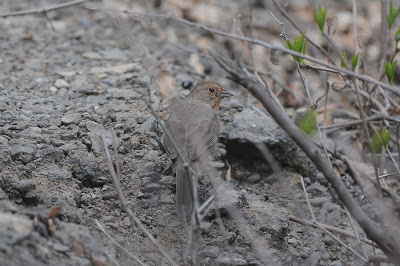Some "interesting" birds were being reported at the Yolo Bypass Wildlife Area in Yolo County so I figured I'd go spend a couple of hours looking around.
This is my story.
Ok, not much of a story but it didn't take long to spot the male EURASIAN WIGEON either way:
Just down the road, the adult-cycle GLAUCOUS GULL was roosting on a small island. Although they are reported seemingly every year from the area, this was my first in the Central Valley. That brings my Yolo County gull total up to 10 species:
By this point it was warming up into a nice spring day with temps in the 70s. This got some bugs flying like this WEST COAST LADY:
The avocet show was particularly amusing. I'm not sure if this guy is singing along to Carl Douglas or if it just tripped and is about to do a face-plant. Either way, you don't need to slap the water guys, that's just not classy:
"Hey guys, everyone look over there... now squawk at it...."
The Three Stooges kept it up, this time apparently practicing some evasive maneuvers:
I was surprised to find six LESSER YELLOWLEGS on my visit; they're usually a bit more uncommon than that. In fact, I'm not sure if I've ever seen more than six at a single location in California at this point. Here's one:
And who doesn't just love comparison photos between LESSER and GREATER YELLOWLEGS? I live for junk like this....
Not much to say about this guy, it's just your bonus CINNAMON TEAL photo for the day:
I ended the visit with 74 species. If you're curious what they all were, be brave and click the
CHECKLIST.
The next day I naturally wanted to see if could top that. Off to the Cosumnes River Preserve I went.
Like the previous day, there were some butterflies bopping around including this RED ADMIRAL that simply wanted to stare directly at the ground:
Ladies and gentlemen, I present to you our smallest dabbler:
Continuing on my recent "kick of flickers" (say it 5x fast), I raised my bins to look at this thing and... yep, another intergrade:
What the crap? I mean, at this point I'm seeing more intergrades than pure "Red-shafted" Flickers. Weird, I don't really get it. I mean, it's interesting; it's just not what I expected for flickers here in California.
This HERMIT THRUSH was puffing out a little bit trying to grab some rays:
Yes, BUSHTITS remain one of the most common species around here. Remind me of that once I leave California:
The FOX SPARROWS haven't left the valley floor yet:
As a farewell present, this PRAIRIE FALCON zoomed over as I was leaving:
In the end, I DID manage to top the total from the previous day. I ended with about 80 species. Here's the
CHECKLIST.
The next day I naturally wanted to see if could top that. Off to... well, no.. no where. I stayed in and had about 20 species from the house. That, and some rain clouds:
Those two days yielded more than 100 species, not bad for two spots in early-March.

















































